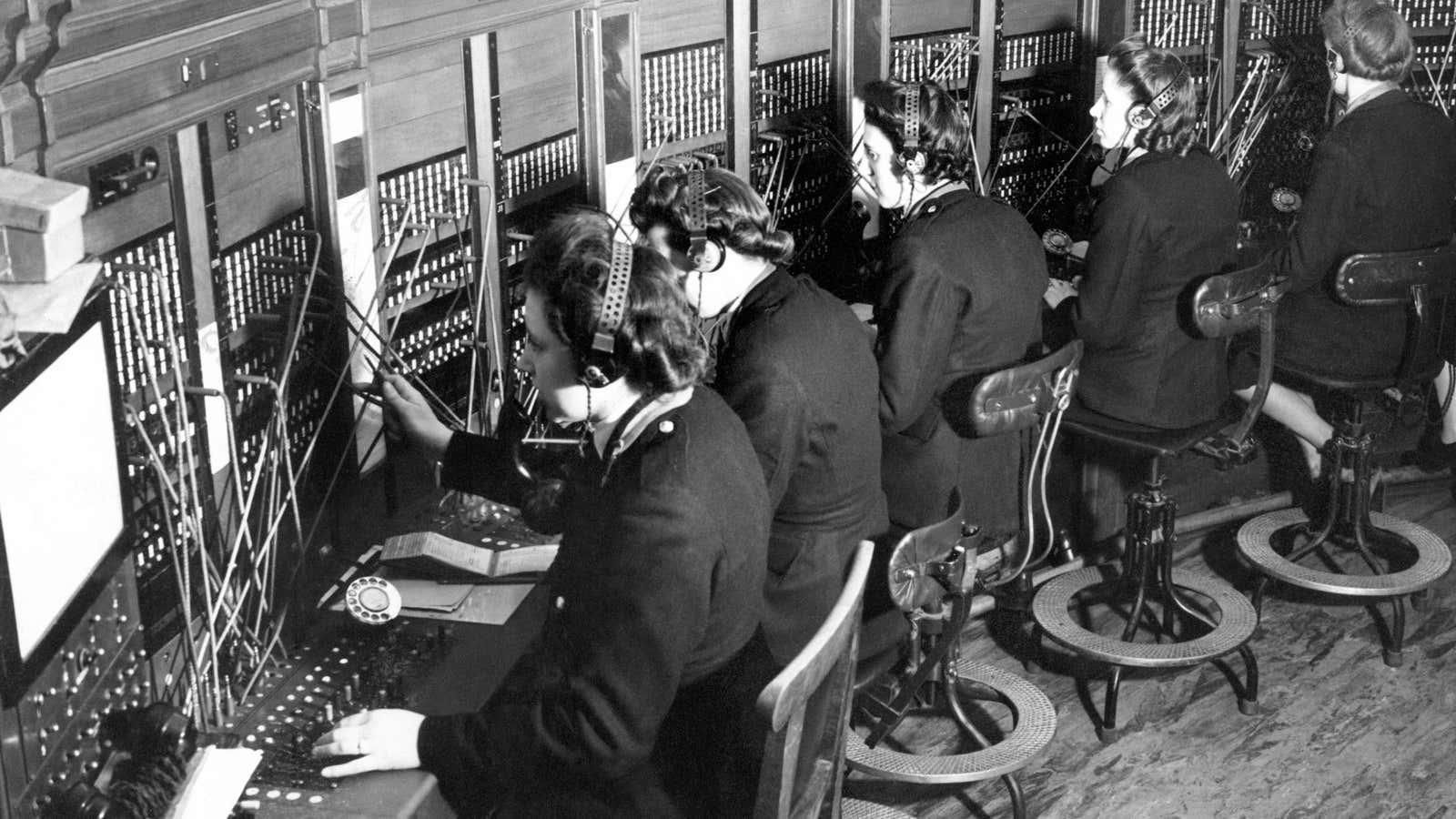Trucking is likely to be transformed by self-driving vehicles and artificial intelligence. What can we learn from other industries that have already been automated?
Welcome to our field guide on trucking. Check out other parts of our deep dive here.
Bank tellers
Not long ago if you wanted cash (remember cash?), you had to ask a human being to hand it over to you between the hours of 9 am and 5 pm. In 1980, there were more than half a million bank tellers working in what many considered to be a very desirable, bustling gig. That number has decreased, but it hasn’t plunged. The Bureau of Labor estimates that by 2024, there will be 480,000 bank tellers in the US, a decrease of roughly 8%.
Paradoxically, JP Morgan and Chase say that about 60% of the transactions that bank tellers perform today can actually be done on a computer, and that number will rise to 90% percent in the near future.
What’s going on? Local bank branches have remained stubbornly present and tellers are still on staff. The difference is that they tend to focus more on complex transactions, like walking customers through a first mortgage application. Ironically, some banks like Bank of America have “digital ambassadors” too, that are hired to help customers navigate the technology of the bank.
In other words, the role of a bank teller didn’t evaporate—it was redefined as something else. And an apocalyptic shedding of jobs didn’t exactly transpire.
Grocery store clerks
Self-checkout kiosks have become ubiquitous in many grocery chains, and some chains, like Metro, have announced layoffs of clerks. But researchers have found that the self-checkouts don’t necessarily result in a quicker turnaround time for customers. The grocery clerk who knows instantly the product code for bananas is 4011 may best the frustrated customer navigating a moody touchscreen to get the same information.
Then came Amazon. In January, the company, fresh off of its acquisition of Whole Foods, unveiled a new vision for grocery shopping in which a computer scans a shopper’s phone upon entrance and any items put into a grocery bag are automatically charged. In other words, it’s legit shoplifting and only a handful of humans float around to help deal with any glitches.
It’s still unclear what the future holds for grocery store clerks. They could follow the path of bank tellers, and turn into, say, the folks who help you plan that perfect meal, or they could go the way of typewriter repair technicians.
Switchboard operators
This would be the worst-case scenario for truckers: total extinction. Today, it’s hard to fathom a time when everyone agreed to having a stranger eavesdrop on phone calls, but that’s how telephones worked for decades. Switchboard operators were mostly women and plugged different lines into jacks to connect one caller to another. When phones improved and rendered this technology obsolete, the number of switchboard operators plunged to a lonely last holdout in the early 1980s.
